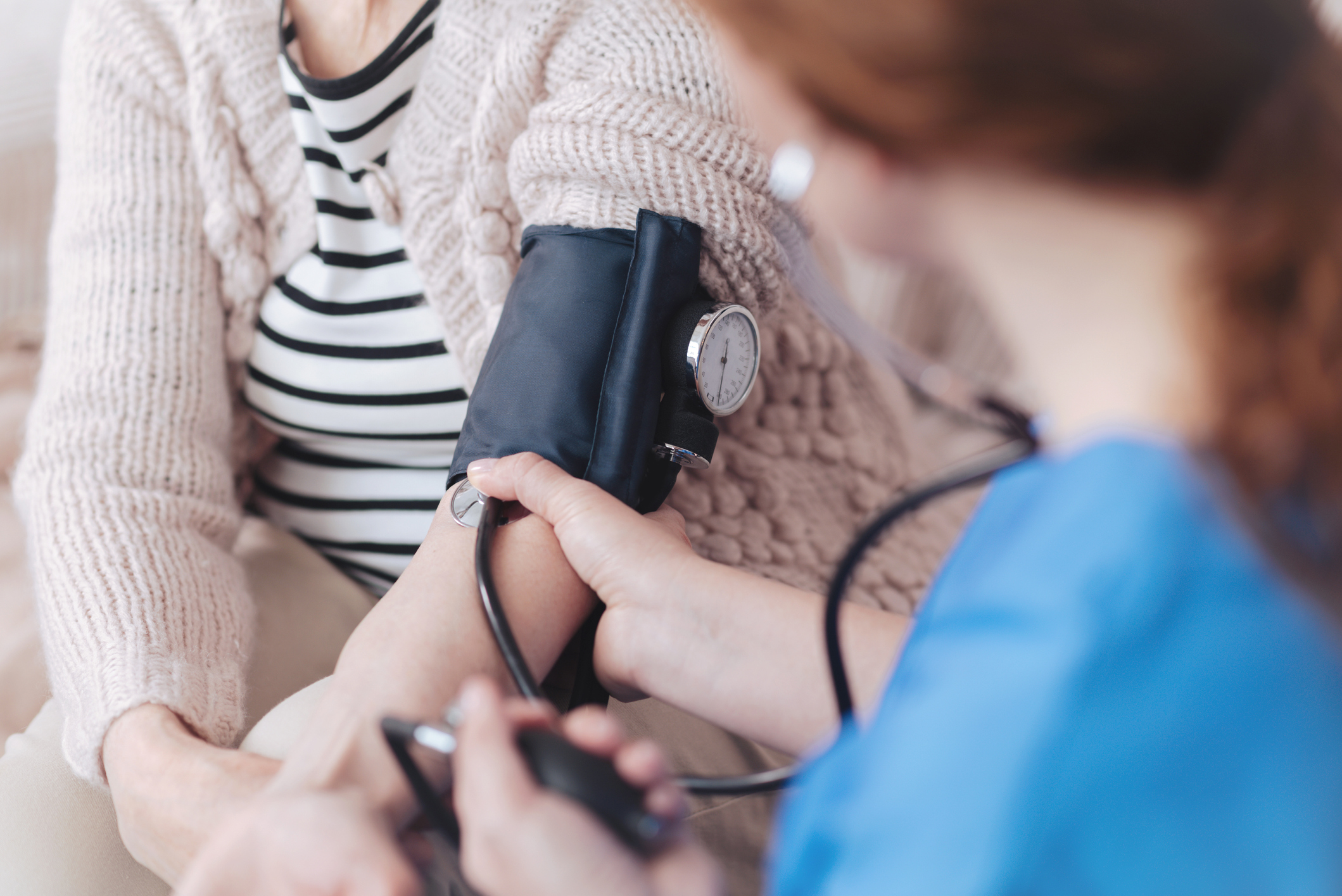Middle-aged and older adults hear plenty of warnings about the dangers of having high blood pressure as a risk factor for heart disease and stroke. But little is said about the sometimes serious health problems associated with having persistent low blood pressure or a sudden drop in blood pressure.
A normal blood pressure reading is 120/80 mm Hg or lower but if blood pressure drops below 90/60 mm Hg, it is considered low. Hypotension, or low blood pressure, may not result in any obvious symptoms but for some adults, it can decrease the supply of oxygen and nutrients to the brain and even lead to shock, which can be deadly.
Positional low blood pressure, which occurs when you get up after sitting or lying down, is more common among older adults. Seniors may experience dizziness, fainting, fatigue, blurry vision, nausea, shortness of breath, pale and clammy skin or problems concentrating if they have low blood pressure. These symptoms can put older adults at greater risk for falls, a leading cause of injury among seniors.
Hypotension can be a natural state for some adults but for people who usually have high blood pressure, a sudden drop in blood pressure can be a warning sign of a serious health problem. Long periods of bed rest, dehydration, loss of blood, nutrient deficiencies and some medications can affect blood pressure. If you or a loved-one experiences ongoing symptoms of low blood pressure, it’s important to seek medical attention. A doctor may prescribe drugs to raise blood pressure or adjust current medications.
Tips for managing low blood pressure at home:
- Lay with feet elevated above the heart
- Drink plenty of water
- Avoid alcohol
- Avoid long period standing in one place
- Don’t sit with crossed legs
- Wear compression stockings
- Ask your doctor about adding more salt to your diet
- A doctor may suggest drinking caffeinated beverages with meals to raise blood pressure
- Eat a healthy diet with smaller, more frequent low-carb meals
- Rise slowly from sitting or laying down
Source: Mayo Clinic
Learn more about symptoms, causes and treatment for low blood pressure and when it is a health concern by following this link to the American Heart Association website






Add Your Voice
0 Comments
Join the Discussion